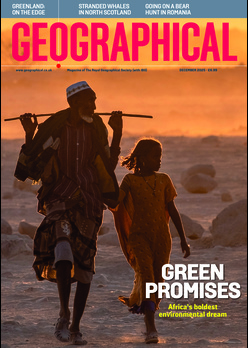
From peppered moray eels hunting to the fluorescent world of plants, discover this year’s winners of the Wildlife Photographer of the Year competition
By
Selected from a record-breaking 60,636 entries from 113 countries and territories, the
category and overall winners of the world’s leading wildlife photography competition,
Wildlife Photographer of the Year, run by the Natural History Museum, London, were
revealed at an awards ceremony this evening.
South African wildlife photographer Wim van den Heever has been announced as Wildlife Photographer of the Year 2025 for his powerful image, ‘Ghost Town Visitor’.
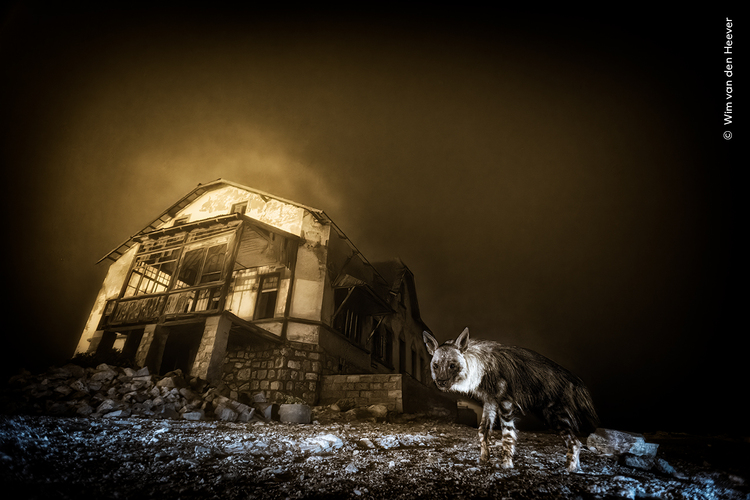
Highlighting how nature interacts with urban spaces in often unusual ways, Wim’s photograph is a haunting yet mesmerising view of a brown hyena visiting the skeletal remains of a long-abandoned diamond mining town in Kolmanskop, Namibia.
Testament to the photographer’s determination and patience, using camera trap technology, it took Wim a decade to get this single shot of a brown hyena after first noticing their tracks at the
site.
The sixty-first Wildlife Photographer of the Year exhibition at the Natural History Museum, London, will open on Friday 17 October 2025 until Sunday 12 July 2026. The exhibition will also embark on a UK and international tour to inspire millions to appreciate and conserve the natural world.
Scroll down to see some of the category winners from this year’s competition…
After the Destruction by Andrea Dominizi, Italy – Young Wildlife Photographer of the Year 2025
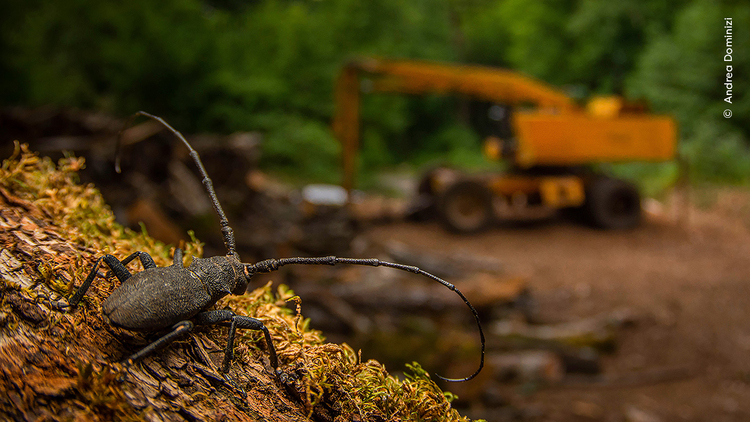
Framed against abandoned machinery, the image spotlights a longhorn beetle in the Lepini Mountains of central Italy, an area once logged for old beech trees.
As longhorn beetles tunnel into dead wood, fungi make their way inside, helping to break it down and recycle nutrients. If the beetles’ habitat is disturbed or destroyed, the effects ripple across the entire ecosystem.
The Weaver’s Lair by Jamie Smart, UK – Winner, 10 Years and Under
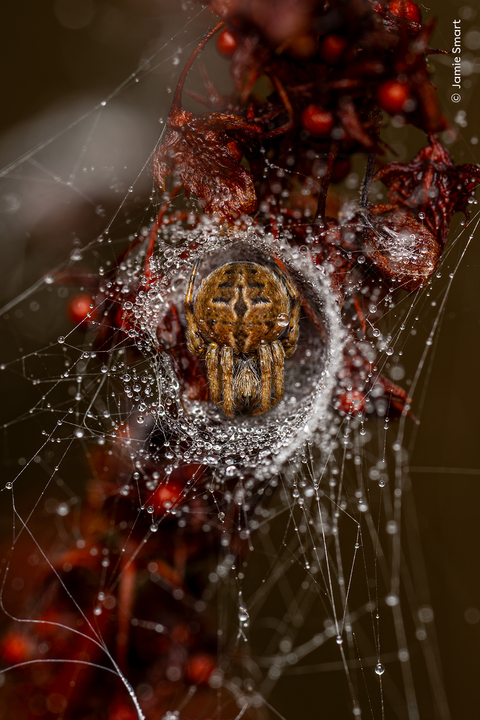
Jamie Smart spots an orb weaver spider inside its silken retreat on a cold September morning. Jamie first noticed the dew-laden web before realising its maker was sitting in a nest.
Enjoying this article? Check out our related reads:
With the patience and steadiness needed to manually focus her camera, she kept the spider perfectly lit and symmetrically framed. This spider’s web is constructed from a scaffold of radial threads, overlaid with a spiral of sticky silk to hold ensnared insects. A strong signal thread transmits vibrations to the spider’s hiding place, triggering it to emerge and collect its prey.
Alpine Dawn by Lubin Godin, France – Winner, 11-14 Years
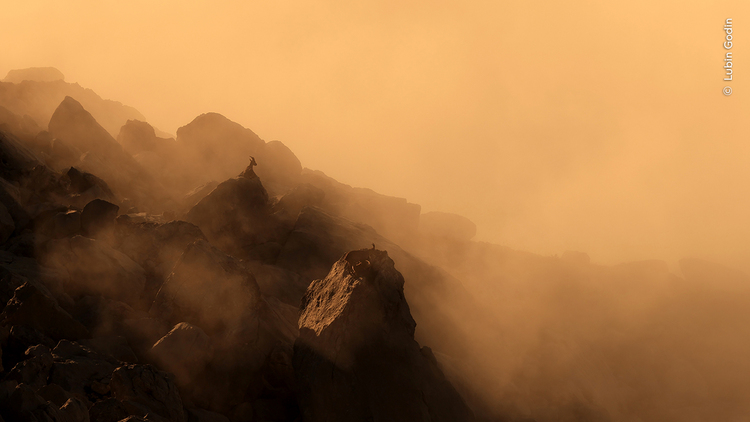
Lubin Godin finds himself in mist-shrouded mountains with silhouetted ibex.
Lubin spotted the Alpine ibex resting above a sea of clouds during an early morning ascent. As the mist rose and the sun broke over the crags, he retraced his steps to capture this ethereal moment before fog thickened and the light faded.
Native to Europe, the species was hunted close to extinction in the early 1800s. Thanks to protection and reintroduction efforts, ibex now roam large areas of the Alps. However, a rapidly changing climate causing shifts in food availability during breeding seasons may hinder their survival.
Like an Eel out of Water by Shane Gross, Canada – Winner, Animals in their Environment

Shane Gross witnesses a peppered moray eel very much in its element hunting for carrion at low tide. It took Shane numerous attempts over several weeks to document this rarely photographed behaviour.
At first the eels were elusive, but once Shane realised that they were scavenging for dead fish, he waited. His patience was soon rewarded when these three eels appeared. Peppered moray eels are well adapted to the intertidal zone.
They can hunt both above and below the water’s surface using their keen senses of smell and sight, sometimes staying out of water for more than 30 seconds.
Shadow Hunter by Philipp Egger, Italy – Winner, Animal Portraits
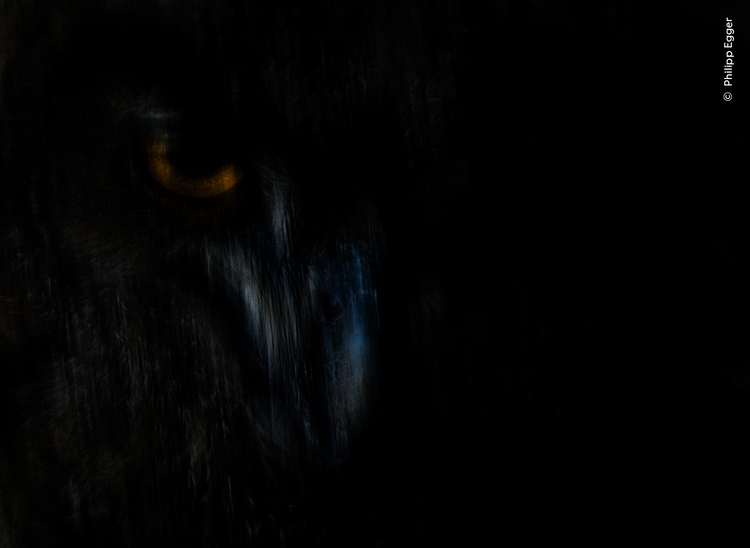
Philipp Egger’s patience is rewarded with the orange glint of an eagle owl’s eyes and the evening light falling on its feathers. Philipp first saw this nest while climbing and spent four years observing it from a distance. He planned this image meticulously, right down to the slight camera wobble to blur the few elements present, using a telephoto lens.
About twice the weight of a buzzard and with a wingspan approaching 180 centimetres (6 feet), these formidable nocturnal predators are among the largest owls. They nest on sheltered cliff ledges or in crevices, often returning to the same site for years.
Synchronised Fishing by Qingrong Yang, China – Winner, Behaviour: Birds

Qingrong was at Yundang Lake near his home, a place he visits regularly to photograph the feeding frenzies: little egrets patrol the surface, ready to pounce on fish leaping to escape underwater predators.
Once a natural marine harbour, Yundang Lake was sealed off from the sea during 1970s development. Isolated from the tides and currents, it became polluted and stagnant. An engineering project later reconnected it to the sea via a system of gates that regulate water flow.
Frolicking Frogs by Quentin Martinez, France – Winner, Behaviour: Amphibians and Reptiles
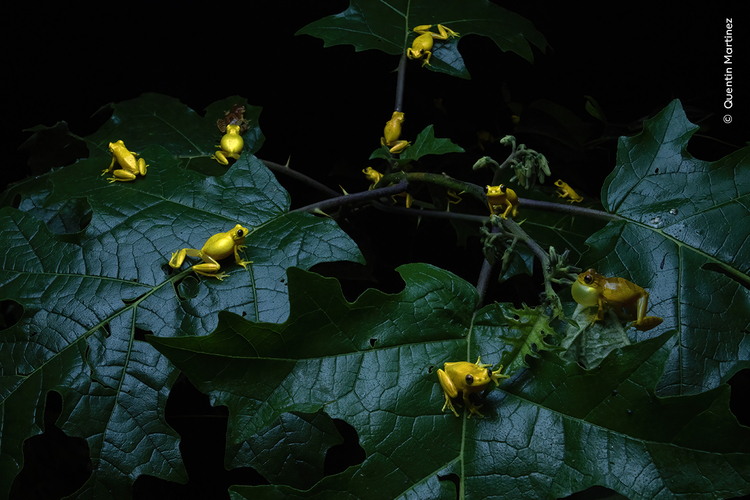
Quentin Martinez discovers a gathering of lesser tree frogs in a breeding event. In persistent rain, Quentin followed a flooded path to a temporary pool in a forest clearing.
He framed this scene with a wide-angle lens and used a diffused flash, which didn’t disturb the frogs, to highlight their metallic sheen. To attract mates, lesser tree frogs produce short, shrill calls. Huge numbers gather, and the spectacular breeding event – triggered by heavy rains – lasts for just a few hours.
Mad Hatterpillar by Georgina Steytler, Australia – Winner, Behaviour: Invertebrates
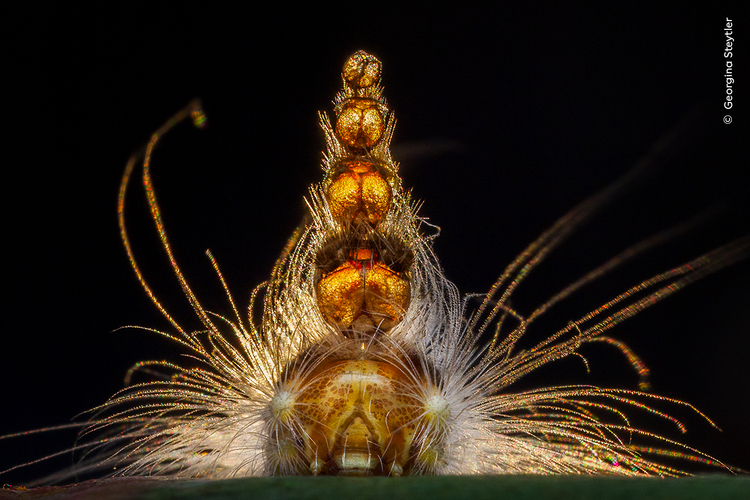
Georgina Steytler showcases the strange headgear of a gum-leaf skeletoniser caterpillar. Georgina had been looking out for this caterpillar for years when she noticed eucalyptus trees bearing skeletonised leaves, telltale signs that the animal had been grazing.
She took this image backlit by the setting sun, using a fill-in flash to illuminate the living head at the base of the stack. This caterpillar’s unusual headgear is made up of old head capsules, each retained with every moult. The resulting tower is believed to help deflect attacks by predators.
The Feast by Audun Rikardsen, Norway – Winner, Oceans: The Bigger Picture
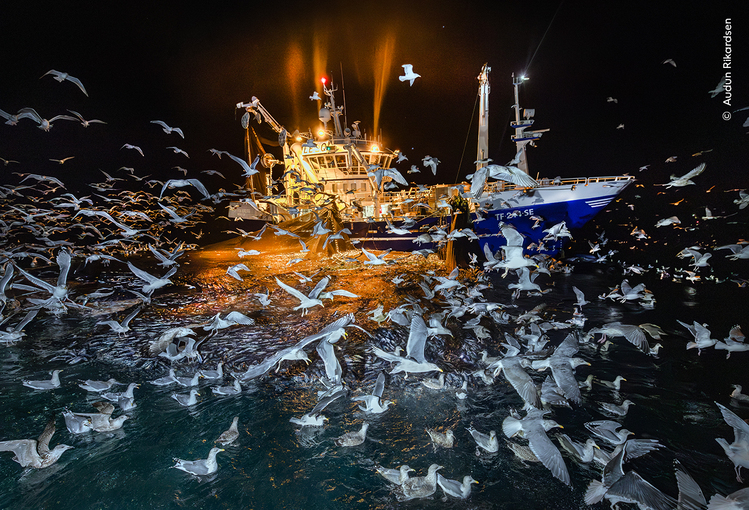
Audun Rikardsen witnesses feeding time around an Atlantic fishing vessel during a polar night in northern Norway. Audun managed to photograph this chaotic scene of gulls attempting to catch fish trapped by nets.
The gulls have learnt to follow the sound of the boats to find a herring feast. Through his work, Audun aims to draw attention to the ongoing conflict between seabirds and the fishing industry. Unfortunately, many birds drown in or around these purse seine nets each year.
Various fisheries and researchers are trialling solutions, including sinking the nets more quickly to make them less accessible to the birds.
Deadly Allure by Chien Lee, Malaysia – Winner, Plants and Fungi
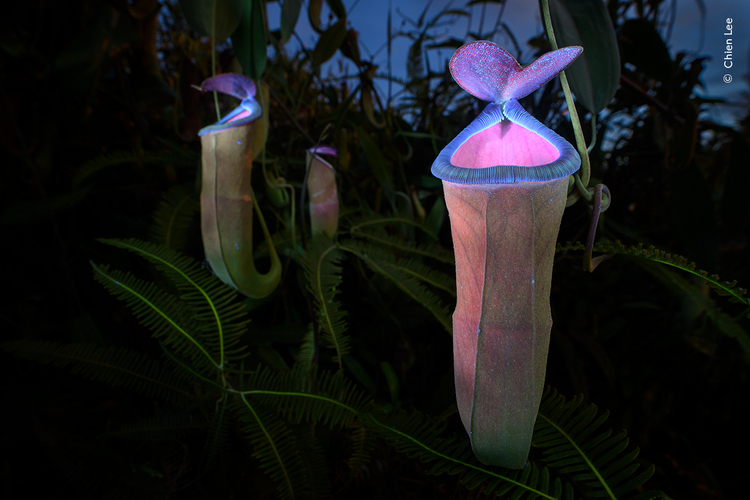
Chien Lee uses a UV torch to reveal the fluorescent world of an insect-attracting pitcher plant. Insects can see ultraviolet (UV) light, but humans can’t, so Chien used a long exposure and a UV torch. Waiting until after sunset, he had just a five-minute window before the ambient light illuminating the backdrop disappeared completely.
Some carnivorous pitcher plants reflect UV light on certain areas as part of their ‘display’. They use colour, scent and nectar to lure their prey into pools of digestive juices at the bottom of their leaves.
Caught in the Headlights by Simone Baumeister, Germany –Winner, Natural Artistry
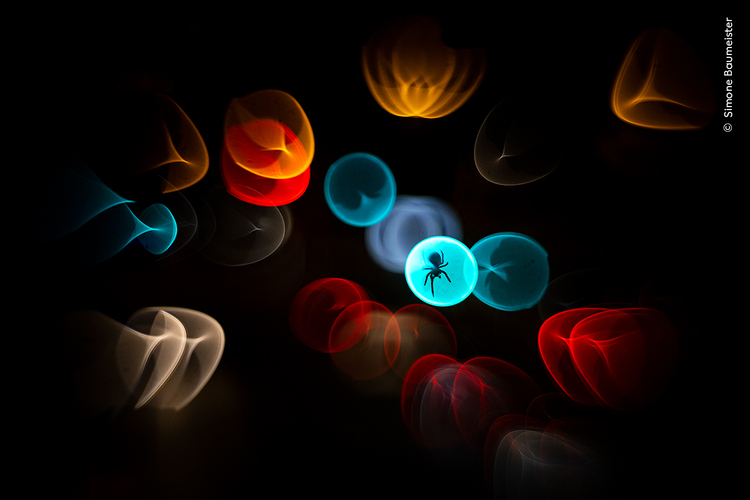
Simone Baumeister shows an orb weaver spider on its web on a pedestrian bridge, silhouetted by lights from the cars below. To achieve this kaleidoscopic effect, Simone reversed one of the six glass elements in an analogue lens.
This distorted the image at the edges while leaving the centre sharply focused. She then cropped the picture to move the spider slightly off-centre. In urban environments, orb weaver spiders often spin webs near artificial lights that attract insects at night.
The web acts as an extension of their sense organ, gathering sound and transmitting vibrations, including those of prey, to their legs.
Survival Purse by Ralph Pace, USA – Winner, Underwater
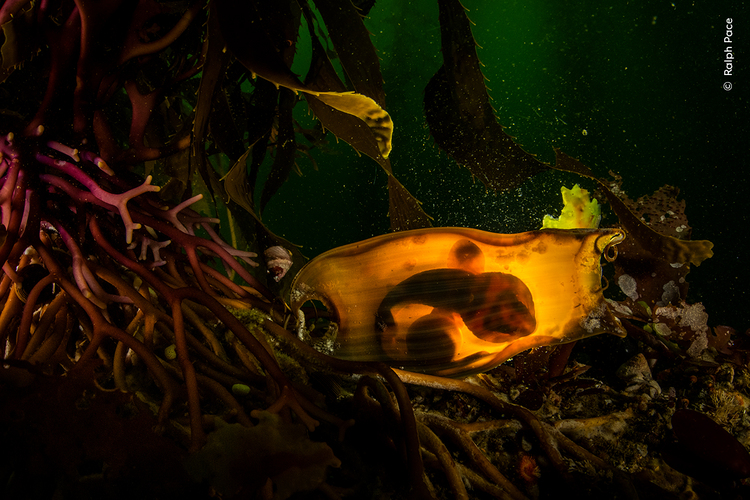
Ralph Pace beautifully illuminates the egg case of a swell shark, tethered to the base of a giant kelp. Faced with strong currents pushing him from side to side, Ralph struggled to keep steady to photograph this egg case, or ‘mermaid’s purse’.
He lit the case from behind to reveal the swell shark embryo within, its gill slits and yolk sac clearly visible among the dark kelp forest. Researchers estimate that kelp forests in Monterey Bay have declined by more than 95 per cent over the past 34 years.
Swell sharks depend on kelp to lay their leathery eggs, making them especially vulnerable to such losses.
Vanishing Pond by Sebastian Frölich, Germany – Winner, Wetlands: The Bigger Picture
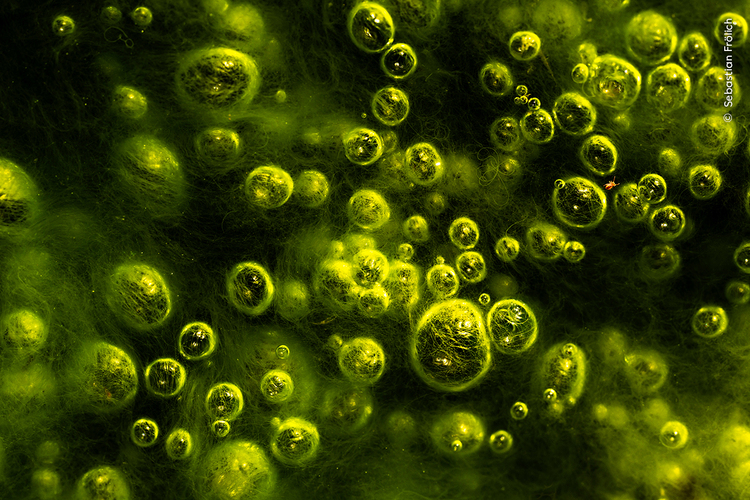
Sebastian Frölich finds a springtail among a galaxy of neon green gas bubbles in Austrian moorlands. Sebastian visited this fragile wetland ecosystem to highlight its importance as a vast store of carbon dioxide and as a habitat for diverse wildlife.
A tiny springtail ran across escaping gas bubbles rising through the algae, giving this image a sense of scale. Austria has lost 90 per cent of its peat bogs, and only 10 per cent of those that remain are in good condition.
Platzertal is one of the last intact high moorlands in the Austrian Alps, and an area renowned for its carbon-storing peat bogs.
How to Save a Species by Jon A Juárez, Spain – Winner, Photojournalism
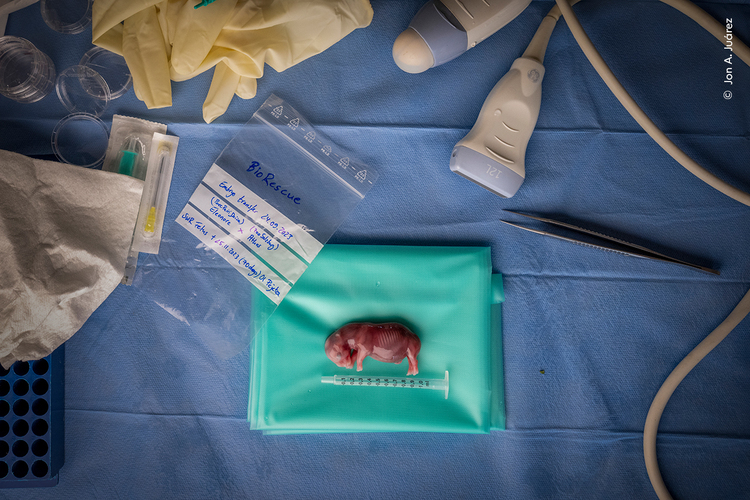
Jon A Juárez documents the groundbreaking science to save the northern white rhino from extinction through in vitro fertilisation (IVF). Jon spent years documenting the work of the BioRescue Project, and says that witnessing a milestone in saving a species ‘was something I will never forget’.
This southern white rhino foetus, which did not survive due to an infection, was the result of the first successful rhino embryo transfer into a surrogate mother through IVF.
This breakthrough paves the way for saving the rare northern white rhino from extinction, as scientists can take the next crucial steps towards transferring the first northern white rhino embryo into a southern white rhino surrogate.
Orphan of the Road by Fernando Faciole, Brazil – Impact Award Winner 2025
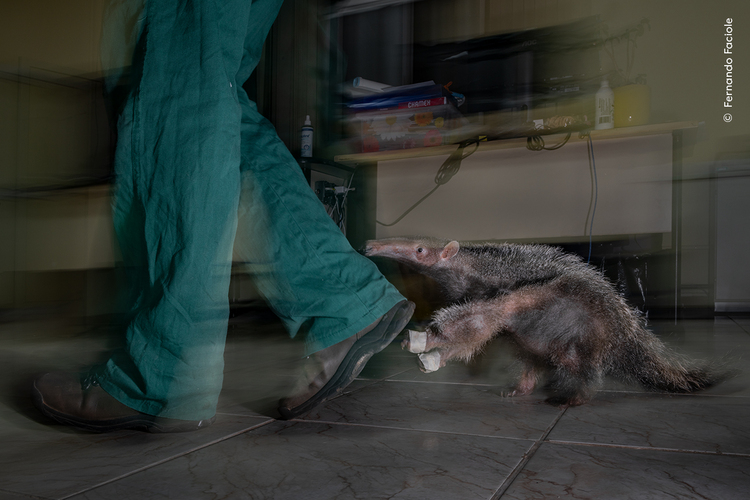
Fernando Faciole watches an orphaned giant anteater pup follow its caregiver after an evening feed at a rehabilitation centre.
Fernando wanted to highlight the consequences of road collisions, a leading cause of the decline in giant anteater numbers in Brazil. This pup’s mother was killed by a vehicle, and the hope is that it will be released back into the wild after being encouraged to develop crucial survival skills by its caregiver.
Alongside rehabilitation centres, the Anteaters and Highways project of the Wild Animal Conservation Institute is developing strategies to reduce anteater deaths on Brazil’s roads. These include erecting fences and building underground tunnels to allow the anteaters to cross safely.

